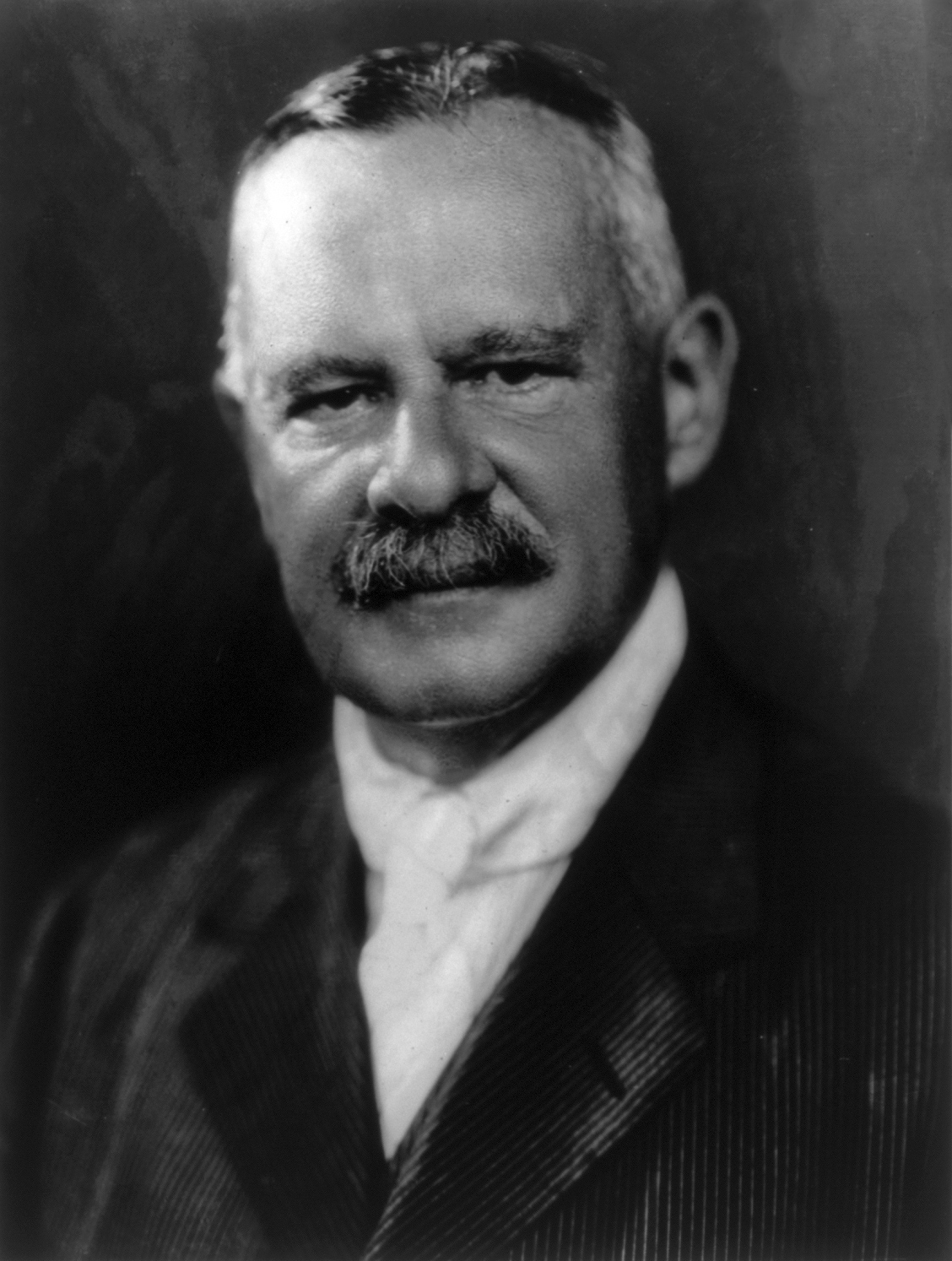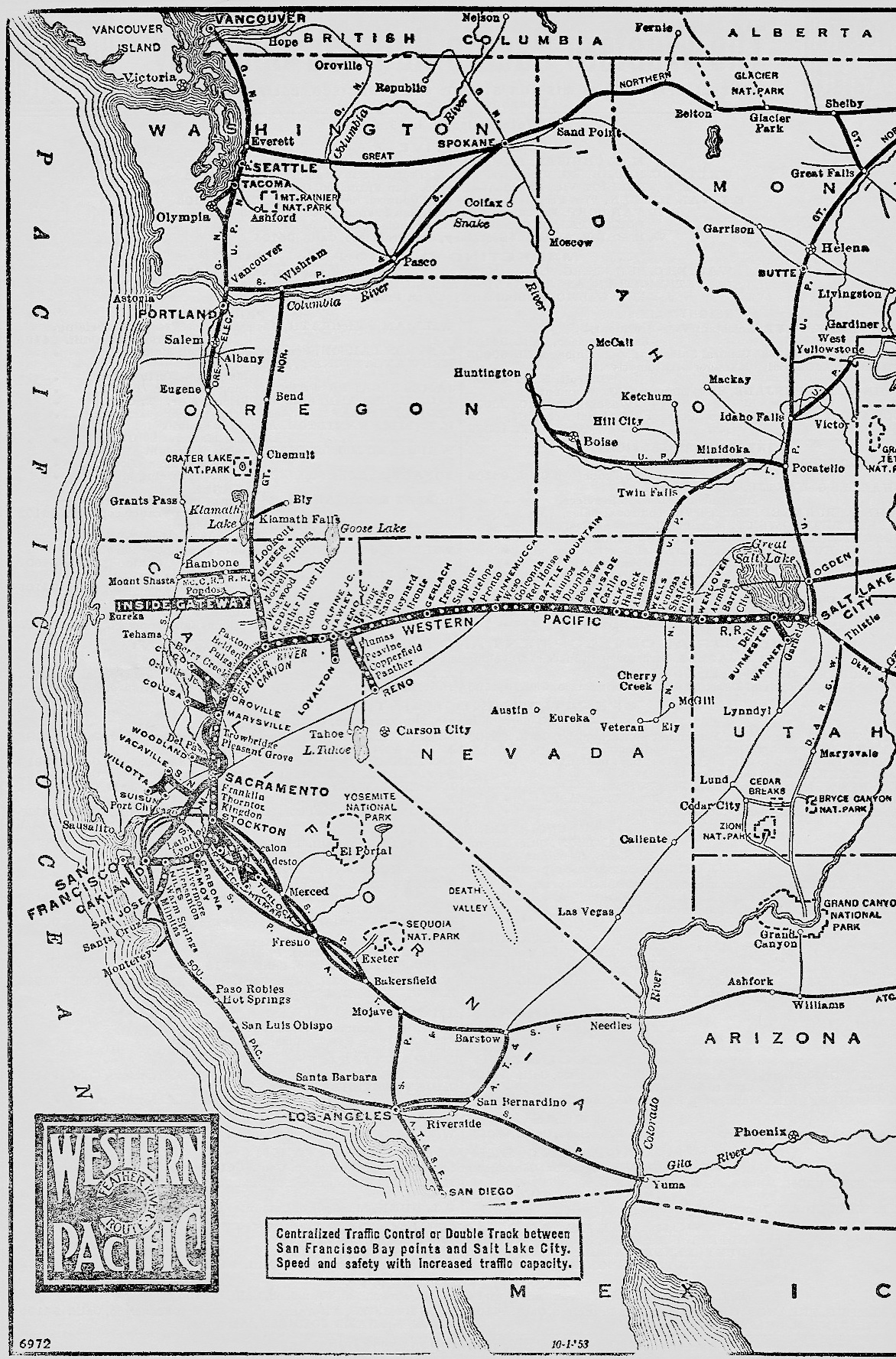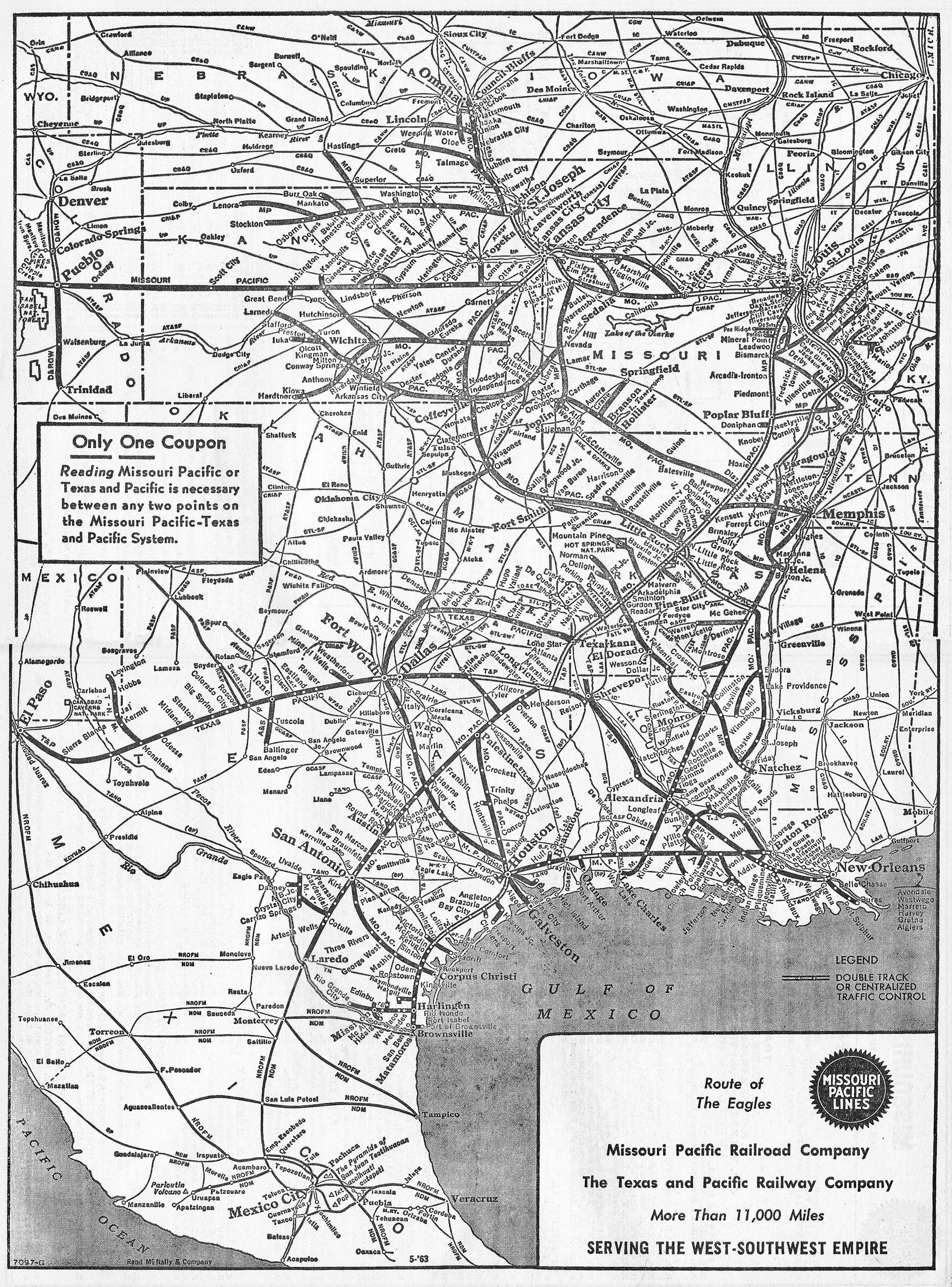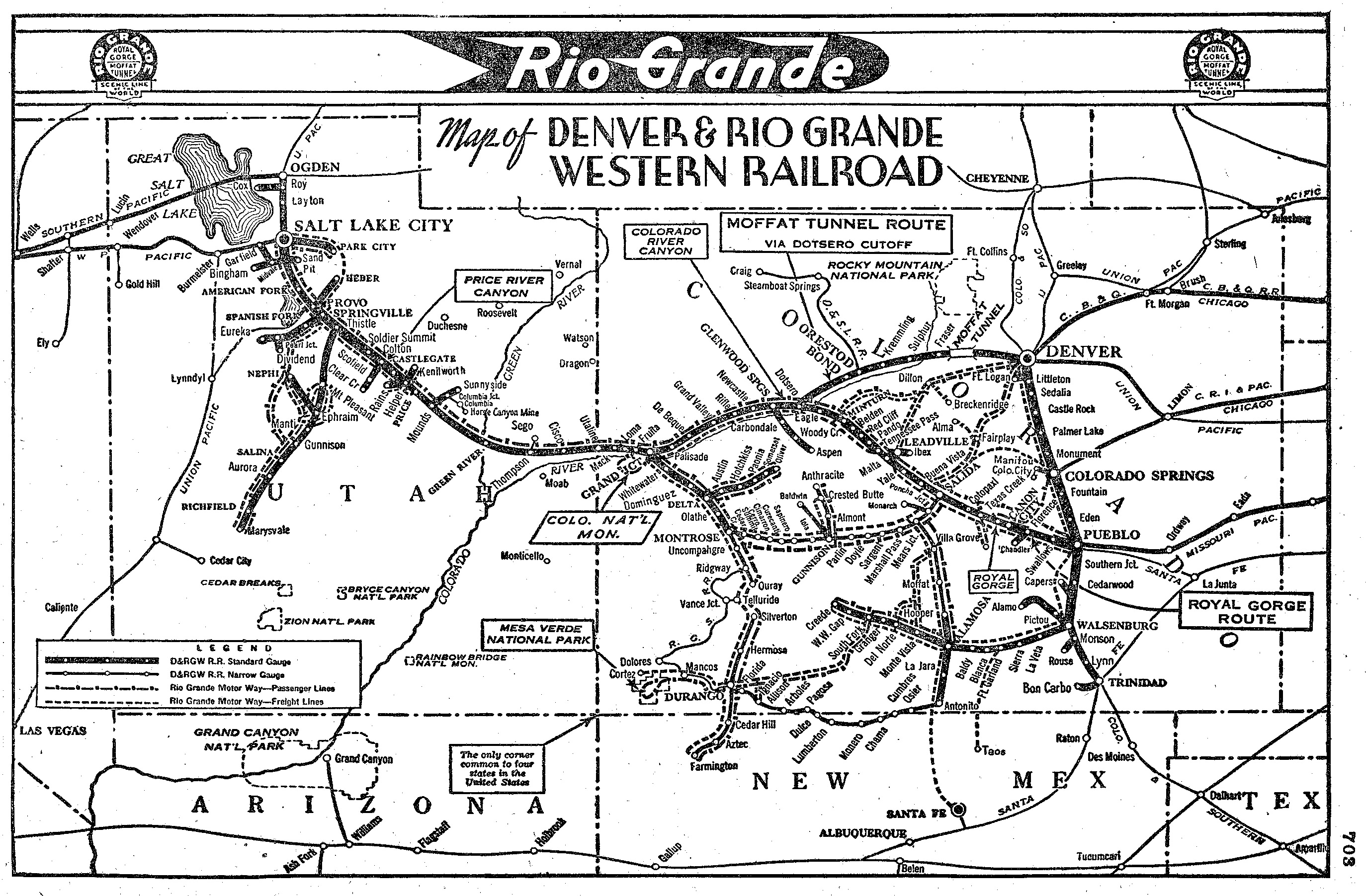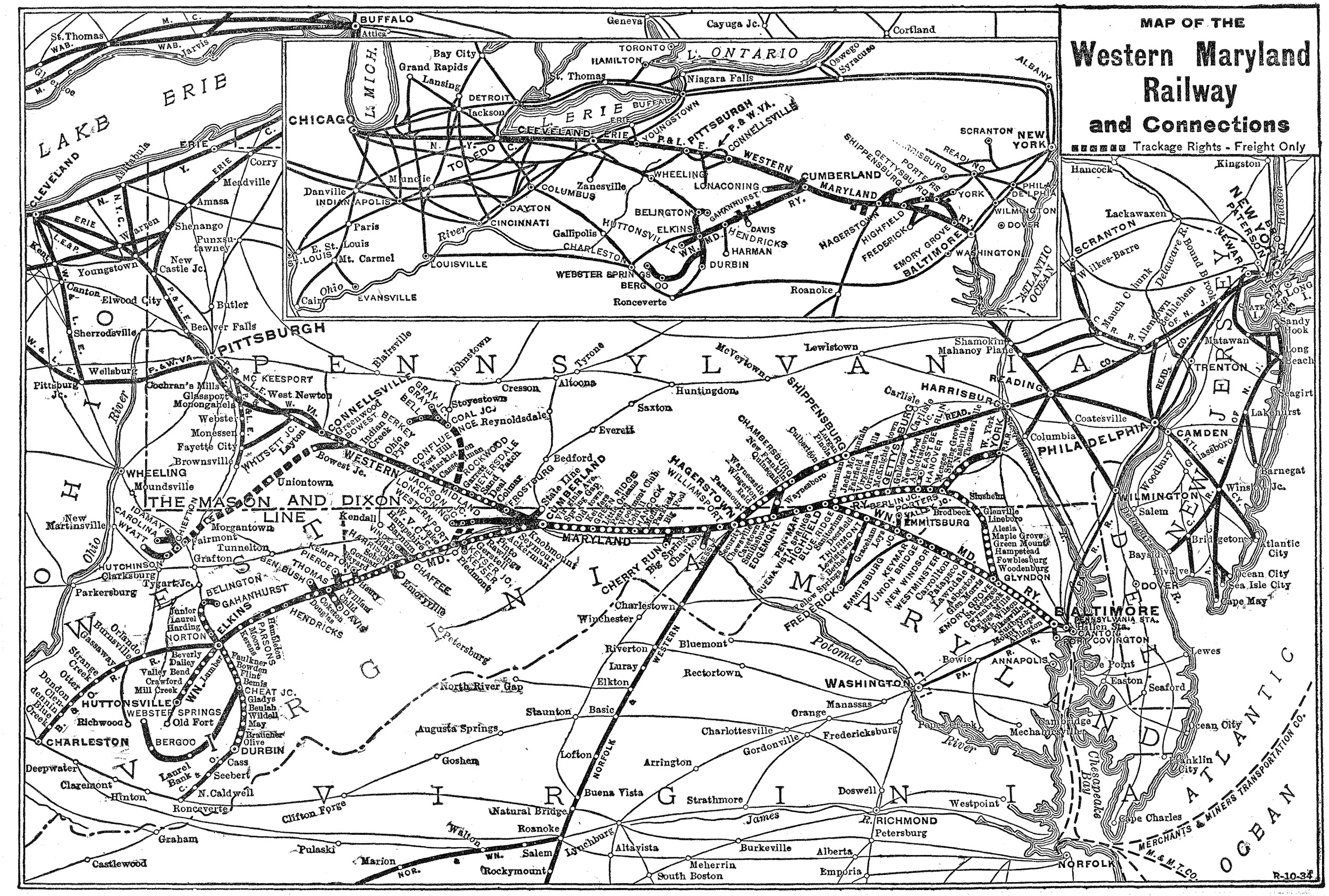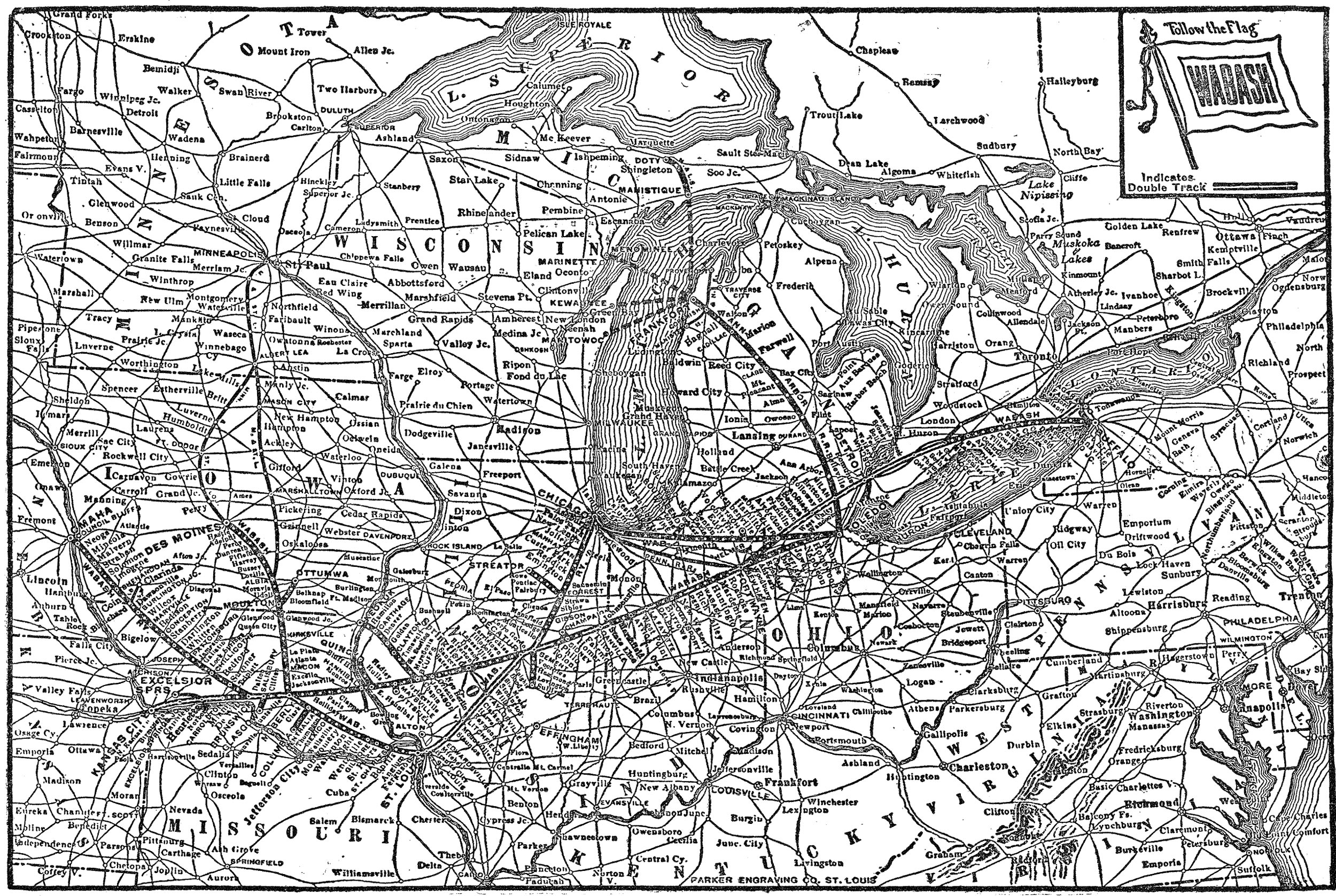- Home ›
- Tycoons ›
- George Gould
George Jay Gould (Railroads): Financier, Estate, Biography
Last revised: August 22, 2024
By: Adam Burns
George Gould was the eldest child of the famed and prosperous Jay Gould.
Taking after his father, George entered the railroad business by the
age of 24 and inherited virtually all of his Dad's railroad holdings
following his death.
While less bold than his father, George was successful as a manager and oversaw several profitable railroads (without the robber baron reputation).
Following the hopes of his Dad, he attempted to string together a transcontinental railroad. However, the financial Panic of 1907 caused Gould to lose his railroad holdings. Nevertheless, upon his death he was worth several million dollars, even after paid debts.
Gould's portfolio (most of which was inherited from his father) at the time of his downfall included most notably the Western Maryland, Western Pacific, Missouri Pacific, International-Great Northern, Texas & Pacific, and the Wabash.
According to the New York Times, when Gould died in 1923 his net worth was valued at $30 million, less than half of his father's fortune that he inherited.
Overview
Perhaps more than any other, Jay Gould defined the general public's distain for rail tycoons. He constantly sought ways of growing his portfolio by carrying out shady and frowned upon practices.
For instance, at one point he even tried to corner the gold market. In addition, he defeated the powerful Cornelius "Commodore" Vanderbilt for control of the Erie Railroad by bribing the New York State Legislature.
For all of Gould's flaws, however, he actually was quite successful at operating railroads when not attempting to enrich himself. He did so by merging together smaller, typically unprofitable, lines to open direct routes to larger markets and cities.
The new conglomerate subsequently became quite profitable. At his zenith, the elder Gould operated or controlled more than 10,000 miles of railroad.
Early Life
George Jay Gould I, known primarily as George Gould, was born on February 6, 1864, in New York City. He was the oldest son of Jay Gould, a prominent financier and railroad magnate, who had played a monumental role in the development of America's railroad industry.
Once he came of age quickly entered the railroad business just as his father had done. His first management experience was that of the Little Rock & Fort Smith Railway (LR&FtS) which he held in 1888.
Personal Life
In his personal life, George Gould was married to Edith M. Kingdon. Together, they had seven children, five daughters and two sons. His children would go on to hold prestigious positions and form influential ties, acting as torchbearers to the Gould family legacy. He also had three children with his second wife (and former mistress), Guinevere Jeanne Sinclair.
At A Glance
Jay Jason Gould (father) Helen Day Miller (mother) | |
Western Maryland Western Pacific Missouri Pacific International-Great Northern Texas & Pacific Wabash Little Rock & Fort Smith Railway St. Louis, Iron Mountain & Southern Railway Denver & Rio Grande Western Railroad Wabash-Pittsburgh Terminal Wheeling & Lake Erie West Virginia Central & Pittsburg Railway Georges Creek & Cumberland Railway Manhattan Railway Company |
The little LR&FtS connected its namesake cities in the 1870s and had been purchased by George's father in 1882 to include in his growing Missouri Pacific - officially the LR&FtS was a subsidiary of St. Louis, Iron Mountain & Southern Railway, another system George would manage in 1893.
Following the death of his father in 1892, George Gould inherited supervision over many of his father's vast railroad interests. With this inheritance, he pivotally entered into the complex world of the rail industry, carrying forward his father's ambition.
With his father's resources at his disposal, George made a significant contribution to the expansion of the American railroad industry. His key pursuit was the realization of a transcontinental railroad system, which his father had sought to create.
At the time, Gould already held the Missouri Pacific system. This entity served as the backbone of his transcontinental vision, playing an integral role in connecting various regional routes.
In addition to the MP, Gould attempted to fully secure the International-Great Northern. However, he eventually lost control of the I-GN as a result of 1907's financial panic. It was later reacquired by the Missouri Pacific in 1925.
The dream of a coast-to-coast railroad was spearheaded by the consolidation of several railroad companies. Gould took onto the challenging task of incorporating these various entities into a united system that could bridge the vast American landscape.
Coast-To-Coast, Transcontinental Railroad
Gould's attempt at stretching his railroad empire across the country began in the late 19th century as he battled E. H. Harriman for a rail link not only to the west coast but also across the country.
Gould also controlled the Denver and Rio Grande (D&RG)/Rio Grande Western (RGW). Both were later merged to form the Denver & Rio Grande Western and were renowned for their scenic routes traversing the Rocky Mountains. The D&RG/RGW was an essential link in his transcontinental scheme, connecting the Front Range at Denver with Salt Lake City, Utah.
Another piece of the puzzle was the Western Pacific. This system was the dream of Arthur Keddie to compete against the Southern Pacific's former Central Pacific route between Ogden, Utah and Sacramento, California.
Keddie, who believed a better route was located through the Feather River Canyon, was stymied by Collis P. Huntington in his efforts. Keddie remained determined and a near innocent encounter with George Gould finally gave him the break he needed.
In Gould's pursuit of a transcontinental railroad, he teamed up with Keddie to form the Western Pacific Railway on March 3, 1903. With his financial backing the WP was completed in late 1909.
Over 20 years later the railroad built a northern line, known as the Inside Gateway, from Keddie to Bieber, CA to connect with the Great Northern, thereby giving it north-south traffic as well as its famous Keddie Wye.
The Wabash Railroad, serving the heartland of America, was another substantial asset that George Gould acquired from his father. This vital link served key industrial and agricultural regions, complementing Gould's transcontinental dream.
Other notable large and small systems Gould either controlled or financed included the Western Maryland; Little Rock & Fort Smith Railway; Wabash-Pittsburgh Terminal; Wheeling & Lake Erie; West Virginia Central & Pittsburg Railway; and Georges Creek & Cumberland Railway
Bankruptcy
Unfortunately, the grand idea of a coast-to-coast railroad system faced considerable obstacles. Complex logistics, competitive forces, regulatory hurdles, and financial strains began to take their toll on George Gould's various railroad ventures.
The mounting challenges led to the bankruptcy of various railroad entities under Gould's control. The downfall commenced with the bankruptcy of the Western Maryland in 1908 followed by the Western Pacific, Denver & Rio Grande, and Missouri Pacific in 1915.
George Gould's ambitious pursuit of a transcontinental system ended up overextending his financial resources. He significantly drained his inherited fortune in his quest to realize his father's dream of a unified railroad system across America.
His insurmountable financial difficulties and the failure to complete the transcontinental system led to George Gould's eventual departure from the railroad industry in 1915. His exit marked an end to the Gould family's significant involvement in the American rail business.
Legacy
Despite his financial downfall, George Gould also had notable achievements. His impact was particularly felt in cities that grew due to his railroad operations. Denver, for example, thrived as a major railroad hub under his management.
Furthermore, George Gould had a significant influence on technological innovations in the railroad industry. His companies were early adopters of modern signaling systems and large, powerful locomotives, markedly improving operations' safety and efficiency.
Beyond his involvement in railroads, George Gould also had an intriguing personal life. Living through the reputed "Gilded Age" of the late 19th century, he belonged to an elite group of industrials who enjoyed fabulous wealth and prominence in high society.
His luxurious lifestyle was in stark contrast to the limitations faced by many in his time. Gould owned numerous mansions, including one in New York City's fashionable district and the Georgian Court estate in Lakewood, New Jersey.
George Gould was also an avid sportsman and played a significant role in promoting golf and tennis in America. He placed tennis courts and golf courses on his estates and became influential in these arenas.
Towards the end of his life, George Gould's wealth diminished greatly. His net worth, once estimated at $72 million, had shrunk to a meager portion of its former glory due to his railroad misadventures and extravagant lifestyle.
Upon his death on May 16, 1923, George Gould's estate was estimated to be worth $30 million. However, this was a far cry from the vast fortune his father had left him.
George Gould's legacy is a complex one, intertwined with prominent success and towering failure. He inherited his father's genius for business, but also his propensity for risk-taking, which eventually led to his financial ruin.
The failure of his transcontinental dream was a significant blow to America's rail industry. His failed railroad ventures resulted in the downfall of numerous companies and led to considerable job losses.
Yet, his early successes and technological advancements in railroads cannot be denied and shaped an essential part of the industry's history. The companies that he controlled generated economic growth in many areas, directly impacting the communities and cities along their lines.
George Gould's life is a vivid exemplification of the volatile American industrial era of the late 19th and early 20th centuries. His story is an integral part of America's railroad history, and his influence is still felt today, nearly a century after his death.
Gould's grand ambition of a unified cross-country rail system was indeed a big part of his legacy. Despite failing to fully realize this dream, it indicated the possibilities in the rail industry that others went on to explore. He pushed for progress and indubitably left an impact on America's railroad landscape.
George Gould's bankruptcy signified the end of an era. The extravagant era of business tycoons and industrial magnates with unrestricted power was curtailed, making way for a more regulated business environment. His downfall served as a lesson for future generations of businessmen and industrialists.
Despite the controversies of his life, George Gould's contributions cannot be overlooked. His tenacity and forward-thinking approach marked the early phases of his career. The rail infrastructure he helped build continues to be a part of America's transportation backbone to this day.
Upon his death, at the age of 59 George Gould's railroad empire was fragmented and sold. While he held millions in debt his estate was still worth a little more than $5 million at the time of his death.
However, the legacy of his aspirations resonates through the tracks and connections that now span across the American continent. His ambition paved the path for future magnates to realize the dream of a truly transcontinental American railroad.
Today, while much of his direct influence is no longer seen on the rail lines, George Gould remains a reference point for the ambitious railroad developer, the relentless industrialist, and a product of America's enduring "rags-to-riches" narrative.
From inheriting his father's railroad empire to meeting a financial downfall, George Gould's life was a rollercoaster filled with dramatic ups and downs. Yet, through his feats and failures, he embodied the persistent spirit of American entrepreneurship.
Gould’s legacy also prompts introspection into the balance between ambition and caution. His story is a cautionary tale about the risks of overextension and the importance of sound financial management, particularly for those with significant inherited wealth.
Conclusion
The legacy that George Gould left behind, though tarnished by financial losses, still echoes in the annals of American business history. Despite his downfall, his ambition, commitment, and relentless spirit remain fundamental to the narrative of America's industrial era.
In conclusion, George Gould's life was a testament to the dynamic and tumultuous era of the American railroad industry in the late 19th and early 20th centuries.
His railroad ventures, marred by both remarkable achievements and wrenching failures, provide a wealth of material for those studying the complex interplay of ambition, finance, and industry in American history. His life stands as an enduring monument of the guts, glory, and pitfalls that marked this transformative period in America.
Recent Articles
-
Virginia Wine Tasting Train Rides
Jul 07, 25 10:45 PM
Wine tasting trains in Virginia provide just that—a unique experience that marries the romance of rail travel with the sensory delights of wine exploration. -
Vermont Wine Tasting Train Rides
Jul 07, 25 10:39 PM
Known for its stunning green mountains, charming small towns, and burgeoning wine industry, Vermont offers a unique experience that seamlessly blends all these elements: wine tasting train rides. -
Indiana's Whiskey Train Rides
Jul 07, 25 10:31 PM
Whether you're a local resident or a traveler looking to explore Indiana from a unique perspective, hopping on a whiskey train ride is a journey worth considering.
